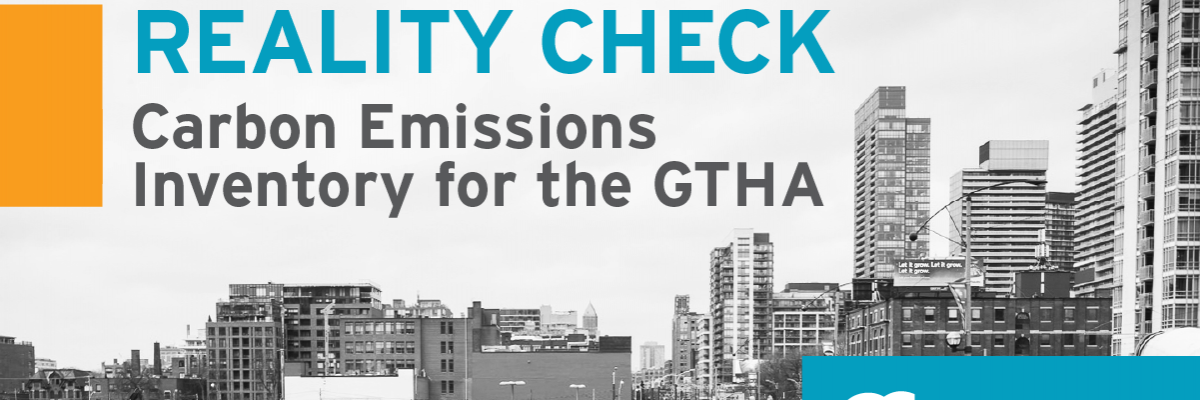The Atmospheric Fund (TAF) today published data that reveals the sources and size of carbon emissions in the Greater Toronto and Hamilton Area (GTHA). This year’s regional emissions inventory provides a much-needed reality check: in the four years following completion of Ontario’s coal phase out, emissions are slowly increasing across the GTHA.
“Previous inventories raised alarm bells but this data is a code red, with emissions increasing across all regions and nearly all sources,” says Bryan Purcell, VP of Policy and Programs. “Beyond announcements and planning, faster implementation and deeper investment is needed to reach climate targets. The pace and direction of actions should be based on robust emissions data.”
This carbon emissions inventory lands at a highly relevant moment providing data and policy ideas as governments across the region grapple with economic recovery and chart the path towards a vibrant, prosperous net-zero GTHA by 2050. This carbon challenge is entirely solvable, with available technology and investment ready to be deployed today.
HIGHLIGHTS
- This one-of-a-kind comprehensive inventory uses consistent methodology, data sources, and time frames across all six GTHA municipalities to create a regional picture with municipal-level detail.
- 56 megatonnes of carbon emissions were emitted in 2018, a 5.2% increase over 2017.
- Emissions from natural gas increased by 11% and account for 40% of total emissions.
- Electricity consumption increased 5%, causing a staggering 57% increase in electricity emissions (due to dirtier supply, mostly from U.S. fracked gas).
- Emissions from transportation (from the use of gasoline and diesel) increased slightly (<1%) with more cars, trucks, and SUVs on the road, travelling more kilometres, and accounts for 34% of total emissions.
- Industry represents 19% of emissions, waste 3%, and agriculture 1%. Emissions from these sectors held relatively steady.
- Local data for each of the six GTHA regions are available in the report.
NOTES TO EDITORS
Reality Check: Carbon Emissions Inventory for the Greater Toronto and Hamilton Area 2018 reports on the major sources of emissions across the region: buildings, transportation, industry, waste, and agriculture. The inventory generally follows the guidelines established in the Global Protocol for Community-Scale Greenhouse Gas Emissions, covering Scope 1 and Scope 2 emissions. Inventory data in the region is by nature available with a two-year delay.
About The Atmospheric Fund
The Atmospheric Fund (TAF) is a regional climate agency that invests in low-carbon solutions for the Greater Toronto and Hamilton Area and helps scale them up for broad implementation. We are experienced leaders and collaborate with stakeholders in the private, public and non-profit sectors who have ideas and opportunities for reducing carbon emissions. Supported by endowment funds, we advance the most promising concepts by investing, providing grants, influencing policies and running programs. We’re particularly interested in ideas that offer benefits in addition to carbon reduction such as improving people’s health, creating local jobs, boosting urban resiliency, and contributing to a fair society.
Media Contact
Julie Leach,
Communications Manager, TAF
jleach@taf.ca, 416 393 6382

